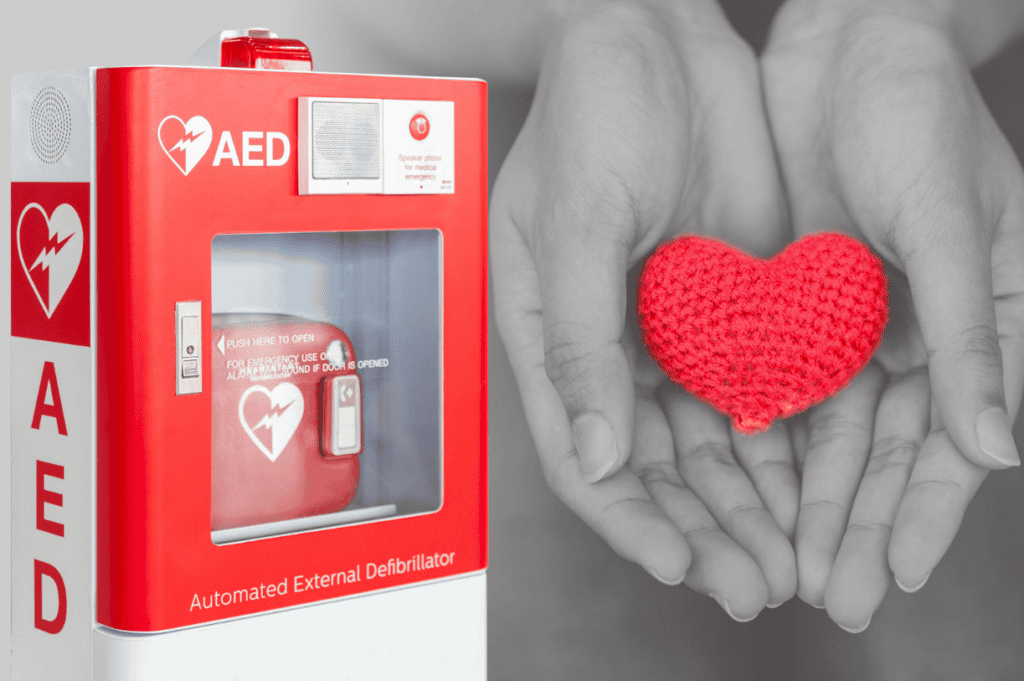Automated External Defibrillators (AEDs) have emerged as crucial lifesaving tools in emergencies, particularly for sudden cardiac arrests. At the heart of their lifesaving functionality are the AED pads, often overlooked but absolutely vital components.
In this article, we delve into the mechanisms behind AED pads, how they work, and their significance in daily life. Understanding their role can empower individuals to act swiftly and effectively during critical moments, potentially turning bystanders into heroes.
What are AED Pads?
AED pads are adhesive electrodes strategically placed on the chest of a person experiencing sudden cardiac arrest. They deliver a precisely measured electric shock through the chest to the heart, aiming to restore its natural rhythm.
These pads are an integral part of AED devices, which are designed for use by non-medical personnel in emergency situations. Their simple yet vital design makes them accessible even to those without medical training, ensuring that anyone, regardless of their background or expertise, can assist in a life-threatening situation.
With clear placement instructions and intuitive design, AED pads empower bystanders to take immediate action, bridging the gap between the onset of cardiac arrest and professional medical intervention.

How Do They Work?
AED pads operate by closely monitoring the heart’s electrical activity, which can become chaotic during abnormal rhythms like ventricular fibrillation or ventricular tachycardia. In these critical moments, the heart’s ability to effectively pump blood is compromised, leading to a life-threatening situation.
AED pads are equipped with sensors that continuously analyze the heart’s rhythm. When they detect an abnormality, such as erratic electrical impulses or irregular heartbeats, the AED swiftly intervenes. It calculates the precise amount of electric shock needed and delivers it through the chest to the heart.
This controlled shock is aimed at momentarily halting the chaotic electrical activity of the heart, allowing its natural pacemaker cells to reset and restore a normal rhythm. By synchronizing the heart’s electrical signals, AED pads play a crucial role in ending the dangerous arrhythmias and potentially saving the individuals’s life.
This automated process ensures swift intervention and minimizes the time between the onset of cardiac arrest and the delivery of lifesaving treatment, greatly improving the chances of survival and reducing the risk of long-term complications.
AED Placement
Proper placement of AED pads is critical for effective defibrillation. When responding to a cardiac arrest emergency, it is essential to expose the patient’s bare chest to ensure good contact between the electrodes and the skin.
Most AED pads come with visual guides or diagrams that indicate the correct placement on the chest, just below the collarbone, and the other pad is positioned on the lower left side of the chest, slightly below the armpit.
These placements ensure that the electric shock passes through the heart’s ventricles, where abnormal rhythms often originate, maximizing the chances of restoring a normal heartbeat. Clear instructions and voice prompts provided by AED devices further assist rescuers in correctly positioning the pads, minimizing the risk of errors during a high-stress situation.
However, the placement procedure may not be the same for kids; therefore, here’s a guide on AED pad placement for infants.

The Importance of AED Pads
The intuitive design and compatibility of AED pads with various defibrillator models make them versatile tools for emergency medical care. Their seamless integration into existing emergency response protocols ensures efficient and effective assistance during critical situations.
Swift Response
AED pads enable quick intervention in case of sudden cardiac arrest, where every second counts. By providing clear instructions and delivering shocks promptly, they increase the chance of survival. This rapid response is crucial for maximizing the chances of a positive outcome and minimizing the risk of long-term complications.
Accessibility
AED pads are user-friendly, making them accessible to a wide range of individuals, including bystanders and first responders. Their simplicity allows even those without medical training to administer potentially lifesaving treatment. This democratization of emergency medical care empowers communities to take proactive steps in safeguarding public health and safety.
Effectiveness
Studies have shown that early defibrillation with AEDs significantly improves the chances of survival in cardiac arrest cases. AED pads play a critical role in this process by ensuring the delivery of the necessary electric shock to restore normal heart rhythm.
Their reliability and effectiveness make them indispensable tools in the chain of survival, bridging the gap between the onset of cardiac arrest and professional medical intervention.
Safety
Modern AED pads are designed to minimize the risk of accidental shocks and ensure the safety not only products individuals involved in the rescue but also instil confidence in bystanders to take decisive action when faced with an emergency.
Versatility
AED pads are compatible with various AED models, making them versatile tools for emergency medical care. Whether in public spaces, workplaces, or homes, having AED pads readily available can make a difference in saving lives. Their compatibility with different AED units enhances their utility and ensures seamless integration into existing emergency response protocols, regardless of the setting or scenario.
Lifesaving AED Pads
AED pads are more than just strictly electrodes; they are lifesaving devices that play a crucial role in emergency medical care. Understanding how they work and their importance in treating sudden cardiac arrest can empower individuals to respond effectively in critical situations.
By ensuring access to AEDs equipped with quality pads and promoting education on their use, we can enhance community resilience and save more lives. Remember, when it comes to cardiac arrest, every moment matters, and AED pads can make all the difference.


